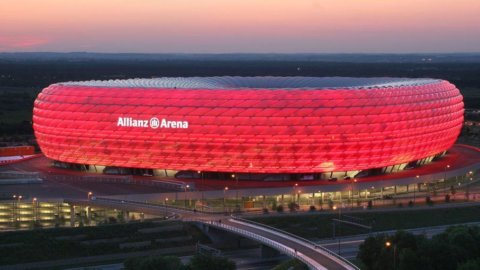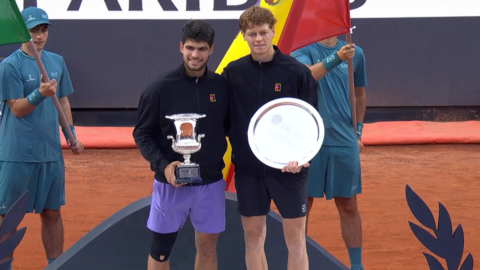Citata in tutte le salse come sistema economico vincente (persino dal presidente francese Nicolas Sarkozy, che punta tutto sull’amicizia con Angela Merkel per essere rieletto all’Eliseo), la Germania sta diventando anche un modello calcistico.
Non solo per gli ottimi risultati, che hanno visto la Mannschaft giungere in finale degli ultimi Europei e in semifinale ai Mondiali sudafricani di due anni fa (sconfitta entrambe le volte dalla Spagna poi vincitrice), ma per una programmazione lungimirante e degli investimenti che l’hanno resa l’isola felice del pallone europeo, notoriamente sommerso dai debiti e in crisi di spettatori e immagine.
La Germania sembra invece avere tutto: vivai eccellenti, una nazionale ringiovanita (24 anni l’età media in Sudafrica) e trascinata da stelle di calibro internazionale come Mezut Ozil e Thomas Muller, stadi sempre pieni (e moderni), e club in attivo, a differenza di quanto accade negli altri campionati continentali, Spagna e Italia su tutti.
L’origine di tutto ciò non è casuale ma frutto di un progetto avviato ben 10 anni fa dai dirigenti della Lega calcio (DFL), che dopo i fasti dell’era Matthaus (un Mondiale e un Europeo vinti) non si è adagiata sugli allori (come accade da altre parti…) e nel 2001, subito dopo l’onta dell’eliminazione al primo turno nell’Europeo belga-olandese dell’anno prima, è immediatamente corsa ai ripari. Non freneticamente (come, ancora una volta, da altre parti..) ma guardando ben oltre il proprio naso.
Sin dal 2002, tutte le 36 società di Bundesliga 1 e 2 per ottenere la licenza sono vincolate ad avere un centro di formazione all’altezza e a schierare una squadra in tutte le categorie di età a partire dagli under 12. Il risultato? Lo illustra Christian Seifert, presidente della Lega: “I vivai questa stagione ospitano in tutto 5.000 ragazzi: negli ultimi dieci anni sono stati investiti 515 milioni di euro, di cui 90 quest’anno. Ecco perchè il 57% dei giocatori della Bundesliga (275 su 525, ndr) è di nazionalità tedesca, la percentuale più alta dal 1999”. E non è tutto: Lo statuto della Lega costringe tutti i club professionistici, a partire dalle squadre under 16, a schierare almeno 12 calciatori eleggibili per la nazionale di categoria.
Tutto questo giova alla Nazionale guidata da Joachim Löw, che nonostante non vinca un trofeo dal 1996 occupa il secondo posto nel ranking mondiale della Fifa, dietro solo alla Spagna degli invincibili. E soprattutto è giovane, pratica un calcio veloce e divertente ed è anche “multi-culturale”, come testimonia la presenza di diversi giocatori di origine straniera ma nati e cresciuti calcisticamente nel Paese di Angela Merkel: il “turco” Ozil, il “tunisino” Khedira, il “ghanese” Boateng (fratello del Kevin Prince rossonero).
Chiaramente, questa esplosione di calcio e gioventù (25 anni la media di età del campionato) non poteva lasciare indifferenti i tifosi tedeschi che loro sì, continuano a riempire gli stadi: la Bundesliga ha l’affluenza più alta d’Europa con i suoi 42mila spettatori di media a partita, divertiti dai 2,82 gol a gara (primato continentale pure questo) ed elettrizzati dalla possibilità di vedere quasi tutte le squadre competitive, come confermato dal fatto che gli ultimi 5 campionati hanno visto cinque campioni diversi.
Non solo Bayern, insomma, e non solo spettacolo e gol. Anche soldi. Il fatturato del calcio tedesco continua a crescere (1,9 miliardi di euro) e soprattutto i suoi club realizzano sempre più profitti: +52,5 milioni nell’ultimo anno, al netto delle tasse. Dodici delle 18 società di prima divisione hanno chiuso in attivo l’ultimo esercizio, il che ha consentito investimenti per esempio sugli stadi, che risultano tra i più moderni del mondo, Allianz Arena di Monaco in primis. Il dato più importante, soprattutto in chiave fair play finanziario, riguarda il rapporto debito/entrate, che la Germania limita al 39%, rispetto alla media europea del 65% e ad alcuni campionati messi molto peggio: Spagna 246%, Italia 156%, Inghilterra 129%.
E’ proprio questa la chiave del successo: in attesa di riprendere a vincere (anche in Champions League un successo teutonico manca dal 2001 col Bayern Monaco), la Germania ha già costruito il futuro. Le sue squadre sono in regola con i bilanci, i giovani crescono, il pubblico si diverte, la nazionale ha aperto un ciclo che nessun’altra in Europa e nel mondo può vantare per qualità e prospettive. E a maggio, la finale di Champions League si gioca a Monaco. Deutschland über alles.





